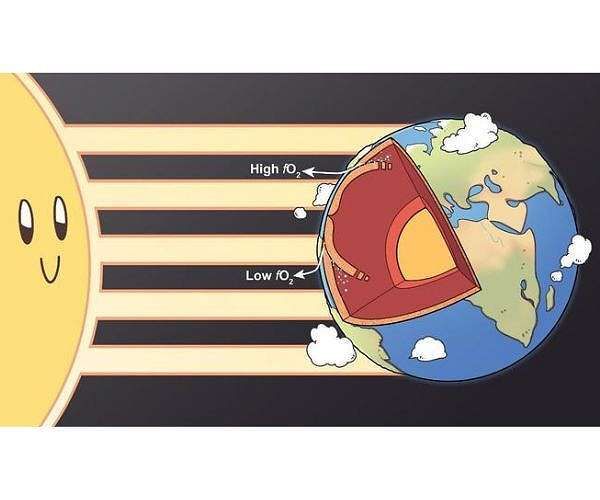30.07.2024

Scientists have long held that deep Earth processes such as volcanic eruptions and tectonic plate movements primarily shape surface conditions, driving events like the mass extinction 66 million years ago and climate transitions. However, a new study in Nature Communications reveals that solar radiation also penetrates deep into the Earth's interior.
The research shows that solar radiation varies with latitude, affecting sea surface temperatures and the distribution of marine life. These organisms, rich in carbon, are transported into the Earth's interior through subduction. The team from the Institute of Geology and Geophysics at the Chinese Academy of Sciences found that this significantly influences the redox state of arc magma.
The redox state of arc magma, balancing between reducing and oxidizing conditions, reflects how solar influence extends into the Earth. Marine organisms contribute organic carbon, a major reducer, affecting the redox conditions of arc magma.
Analyzing thousands of magma samples globally, researchers observed critical redox state variations, important for identifying metal ores like copper, tin, and lithium, essential for renewable energy technologies. These insights highlight the interactions between surface climate and deep Earth processes.
Key indicators in the study were the levels of vanadium and scandium in arc magma. By compiling global geochemical data from Cenozoic arc magma and olivine-hosted melt inclusions, the researchers found a latitude-dependent redox distribution. Lower latitudes had less oxidized magma compared to higher latitudes.
"Previous studies mainly compared samples from the same longitudinal regions, such as the United States in the northern hemisphere and Mexico in the tropical zone, without finding significant differences. However, our samples from different latitudes showed varying redox responses, which piqued our curiosity. Trying to explain these differences led us to discover this unexpected pattern," said WAN Bo, a geologist and co-author of the study, sharing his motivation for this study.
"This unexpected pattern suggests that the surface climate has a direct influence on the deep Earth. It also suggests that the Earth's surface environment and climate have a vital influence on the deep Earth," said WAN.
Further evidence came from seafloor studies, showing more reduced carbon deposits at lower latitudes. This carbon interacts with sulfur to form sulfide, which is transported into the mantle, contributing to the observed redox pattern.
"The observed pattern suggests a strong link between the surface environment and the redox state of the deep Earth, providing new directions for exploring the resources and environmental impacts of subduction systems at different latitudes," said HU Fangyang, corresponding author of the study.
While these results are compelling, the researchers call for more extensive data from global marine and subducted sediments, opening new avenues for scientific exploration.
Quelle: SD
